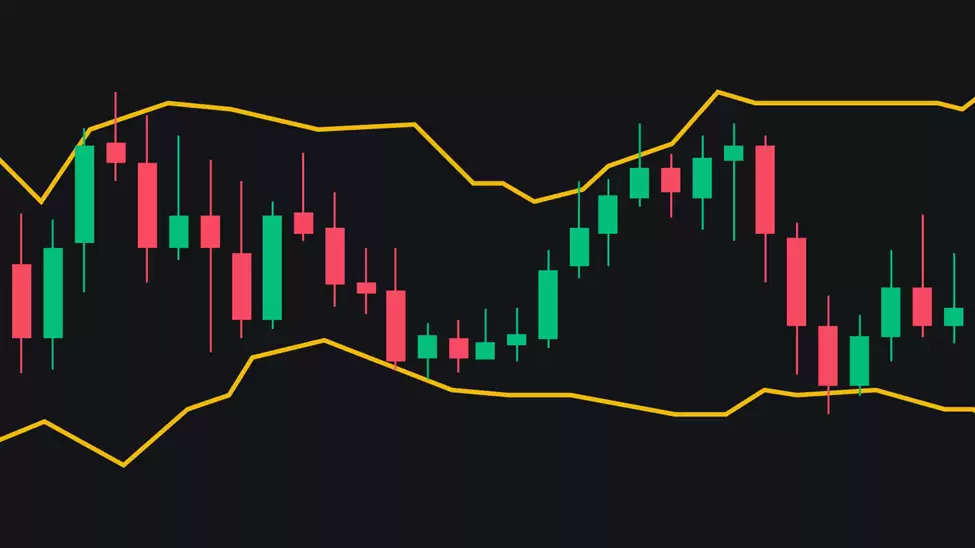Bollinger Bands : What Do Bollinger Bands Tell You?

Bollinger Bands are a popular technical analysis tool invented by John Bollinger in the 1980s. They consist of three lines: the middle line is typically a 20-day simple moving average (SMA) of the closing prices, and the two outside bands are standard deviations of the price movement, positioned above and below the SMA. This tool is used extensively in various markets including stocks, indices, and bonds. Understanding what Bollinger Bands tell you can enhance your trading strategy, particularly if you are interested in diversified investments like government bonds.
How Bollinger Bands Work
The primary function of Bollinger Bands is to provide a relative definition of high and low prices of a market. By measuring price volatility, Bollinger Bands adjust themselves to market conditions. Here are the key concepts conveyed by Bollinger Bands:
- Price Volatility: The width of the bands is a measure of volatility. Wide bands indicate high volatility, while narrow bands indicate low volatility. This can signal periods of consolidation or impending increases in volatility.
- Market Trends: When price moves closer to the upper band, the market is considered overbought, and when it moves closer to the lower band, it is considered oversold. This can help traders identify potential entry and exit points.
- Potential Reversals: Prices tend to bounce within the bands' upper and lower limits. Traders watch for instances when the price touches or crosses the bands, which may indicate a reversal or continuation of a trend.
- Squeeze: A "squeeze" occurs when the bands come closer together, indicating decreased volatility. This is often seen as a precursor to a sharp price movement.
Application in Different Markets
While Bollinger Bands are widely used in stock trading, they can also be useful in other areas, such as in the evaluation of government bonds. Here’s how they can apply:
- Government Bonds Market: In markets like India, where investors may seek to understand how to buy government bonds in India, Bollinger Bands can help in assessing the volatility and trading patterns of bond prices. For instance, during periods of economic instability, bond prices might exhibit increased volatility, which Bollinger Bands can help identify.
How to Buy Government Bonds in India
For those interested in the Indian market, understanding how to buy government bonds in India is important. Government bonds are typically less volatile than stocks but can still benefit from the insights provided by Bollinger Bands. Here’s a brief guide on buying government bonds in India:
- Primary Market Purchases: Investors can buy government bonds during auctions held by the Reserve Bank of India (RBI) through platforms like the RBI Retail Direct scheme.
- Secondary Market Transactions: Government bonds can also be purchased after their initial issuance in the secondary market through stock exchanges or over-the-counter markets.
- Dematerialized Accounts: To buy bonds, investors need a demat account, which can be set up through a financial institution or brokerage firm.
Key Considerations for Using Bollinger Bands
When using Bollinger Bands in trading or investment analysis, several key considerations should be taken into account to maximize their effectiveness. Here are some essential points:
1. Setting the Parameters
- Standard Settings: The default setting for Bollinger Bands is a 20-day simple moving average (SMA) with two standard deviations. However, depending on your trading style and the asset’s volatility, these parameters can be adjusted.
- Adjustments for Different Markets: For less volatile markets like government bonds, you might consider adjusting the standard deviation or the period to better suit the slower pace of price changes.
2. Interpretation in Different Market Conditions
- Trending Markets: In a strong uptrend or downtrend, prices can hug the upper or lower band for extended periods. Consider this when planning trade entries and exits, as touching the bands alone does not always indicate a reversal.
- Sideways Markets: In non-trending conditions, prices tend to oscillate between the upper and lower bands. Here, the bands can serve as levels of support and resistance.
3. Combining with Other Indicators
- Volume Indicators: Combining Bollinger Bands with volume indicators can help confirm the strength of band breakouts. For example, a price move beyond a band with high volume can indicate a stronger, more valid move.
- Momentum Indicators: Tools like the Relative Strength Index (RSI) or MACD can help confirm whether the price touching the Bollinger Band is a momentary extreme or the start of a new trend.
4. Risk Management
- Stop-Loss Orders: Always use stop-loss orders to manage risk, especially when the market conditions suggest a potential breakout against your position.
- Position Sizing: Adjust your position size based on the width of the bands; narrower bands suggest lower volatility and thus might allow for larger positions, considering risk management.
5. Understanding 'The Squeeze'
- Squeeze Strategy: A squeeze, where the bands come closer together, might indicate that a sharp price move is likely near. This can be a signal to prepare for a breakout.
FAQs
Can Bollinger Bands be used for all types of securities?
Yes, Bollinger Bands can be applied to various securities, including stocks, bonds, commodities, and forex. However, the effectiveness may vary based on the asset's volatility and the market's characteristics.
Are Bollinger Bands enough to make trading decisions?
While Bollinger Bands provide valuable market insights, they should not be used in isolation. Combining them with other technical indicators and fundamental analysis provides a more robust trading strategy.
How do I adjust Bollinger Bands for different time frames?
For shorter time frames, you might consider tightening the bands by reducing the standard deviation or the SMA period to capture smaller price movements. Conversely, for longer time frames, increasing the SMA period or standard deviation can help smooth out less significant fluctuations.
What does it mean if the price continually touches one Bollinger Band?
Continual contact with one Bollinger Band suggests strong trending behavior in the direction of the contact. In an uptrend, repeated touches of the upper band indicate strength, while in a downtrend, touches of the lower band suggest selling pressure.
How reliable are Bollinger Band breakouts?
Bollinger Band breakouts need to be confirmed with other indicators to increase their reliability. A price breakout with corresponding high volume or a confirming momentum indicator can suggest a more reliable trading signal.
Conclusion
Bollinger Bands offer valuable insights into market dynamics and price volatility, aiding investors in making informed decisions, whether trading stocks or buying government bonds in India. By understanding these dynamics, investors can better position themselves in various market conditions, leveraging the predictive power of Bollinger Bands to capitalize on potential price movements.



